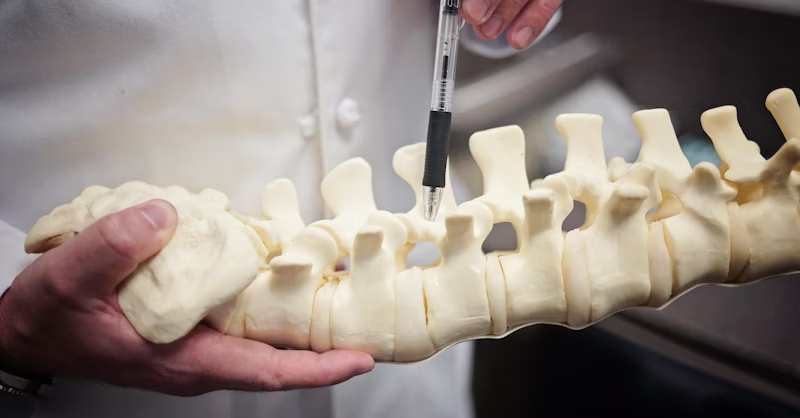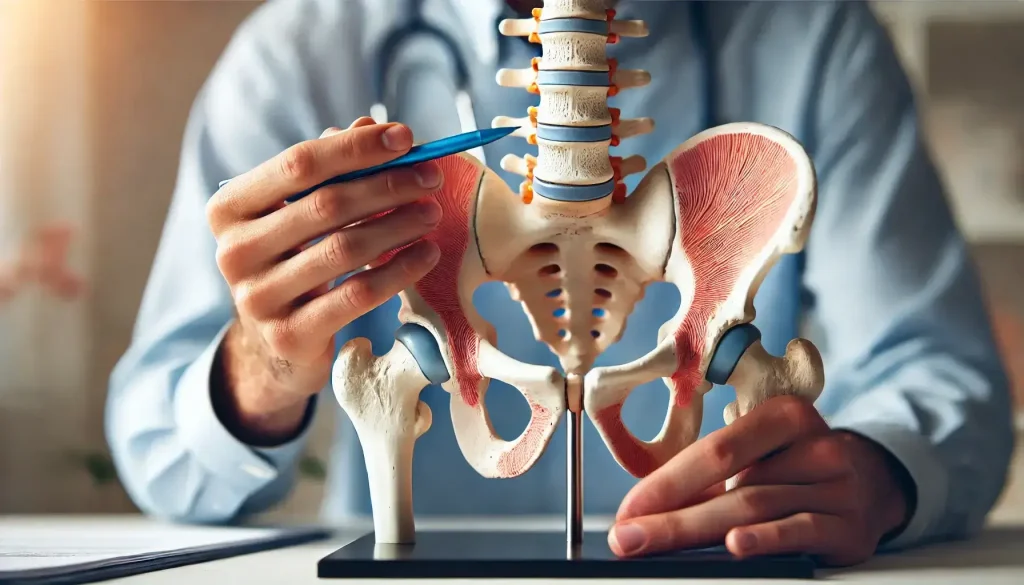Understanding the Sacroiliac Joints: Anatomy and Function:
The sacroiliac (SI) joints are located where the sacrum meets the iliac bones of the pelvis. These joints play a vital role in supporting your upper body while providing limited but crucial motion that helps with shock absorption and movement. While they don’t move much, they are instrumental in distributing weight across the pelvis and lower back, especially during activities like walking, running, and lifting.
When functioning properly, you won’t even notice them. However, dysfunction in the SI joints can lead to persistent lower back pain and discomfort, particularly around the hips, buttocks, or upper legs. At Winter Park Regenerative Medicine, we specialize in diagnosing and treating sacroiliac joint disorders to restore proper function and comfort. With our advanced regenerative therapies and holistic approach, patients suffering from SI joint dysfunction can reclaim a pain-free lifestyle and return to the activities they love.
Signs You May Have SI Joint Dysfunction:
- Persistent pain in the lower back or buttocks
- Pain that radiates into the groin or upper thigh
- Stiffness or limited range of motion in the lower back
- Discomfort when transitioning from sitting to standing
- Pain while climbing stairs or standing on one leg
- Worsening discomfort after prolonged standing or walking
- A feeling of instability in the pelvic region
- Pain that worsens during activities such as bending or twisting
- Tenderness around the SI joint when pressure is applied
- Relief from pain while lying down or changing positions
Common Causes of SI Joint Pain:
Several factors can contribute to sacroiliac joint dysfunction. Traumatic injuries from accidents or falls can misalign the SI joint, leading to inflammation and pain. Pregnancy is another common cause due to hormonal changes and added stress on the pelvis, making the joint more mobile than usual. Additionally, conditions such as arthritis, particularly ankylosing spondylitis, can affect the integrity of these joints.
Prolonged repetitive stress from high-impact sports or uneven leg length can also cause or worsen SI joint dysfunction. At Winter Park Regenerative Medicine, we take a comprehensive look at your medical history, lifestyle, and physical activity to determine the root cause of your SI joint pain. Our goal is not just to relieve pain but to address the underlying issues contributing to the discomfort. With tailored treatment plans, we help restore joint balance, reduce inflammation, and improve your overall quality of life.
Why Choose Winter Park Regenerative Medicine?
- Expertise in musculoskeletal disorders including SI joint dysfunction
- State-of-the-art diagnostic imaging and physical assessments
- Personalized treatment plans tailored to your individual needs
- Non-surgical and minimally invasive regenerative therapy options
- Use of PRP (Platelet-Rich Plasma) and stem cell injections
- Compassionate and highly skilled medical professionals
- Emphasis on long-term results and functional restoration
- Proven success in reducing pain and improving mobility
Diagnosing SI Joint Dysfunction: A Tailored Approach:
Correctly diagnosing SI joint dysfunction can be complex because its symptoms often mimic other conditions like herniated discs or sciatica. At Winter Park Regenerative Medicine, we use a combination of advanced diagnostic tools and hands-on evaluations to pinpoint the source of your pain. A comprehensive physical exam helps us understand your movement patterns and any limitations you’re experiencing. We also use imaging tools such as X-rays, MRI, or CT scans to rule out other conditions and confirm SI joint involvement.
Diagnostic injections may also be used to provide immediate pain relief and confirm the SI joint as the pain source. Our team understands the importance of precision in diagnosis because it guides the most effective treatment plan. Through thorough evaluations, we ensure every patient receives the targeted care they need to achieve optimal results with minimal downtime.
Non-Surgical Treatment Options for SI Joint Pain:
- Physical therapy and guided rehabilitation programs
- Chiropractic adjustments to improve joint alignment
- Ultrasound-guided corticosteroid injections
- PRP (Platelet-Rich Plasma) injections for natural healing
- Stem cell therapy to regenerate damaged joint tissue
- SI joint belts or braces for added support
- Trigger point release and manual therapy
- Anti-inflammatory medications and supplements
Regenerative Medicine for SI Joints:
Regenerative medicine offers an exciting, non-surgical alternative to traditional pain management techniques. At Winter Park Regenerative Medicine, we utilize cutting-edge biological treatments such as platelet-rich plasma (PRP) and stem cell therapy to support the body’s natural healing processes. PRP therapy involves concentrating your own blood platelets and injecting them into the affected SI joint area to stimulate tissue repair and reduce inflammation. Stem cell therapy uses your body’s own cells to regenerate damaged joint tissues, offering long-term relief without the need for invasive surgery.
These treatments are ideal for patients who want to avoid steroids or surgery and instead tap into their body’s innate ability to heal. Many patients experience improved mobility, decreased pain, and a faster return to daily activities following regenerative therapy. Our experienced specialists ensure treatments are customized and precisely delivered for maximum effectiveness.
Benefits of Early SI Joint Treatment:
- Prevents the progression of chronic pain
- Reduces reliance on medications and opioids
- Improves posture and spinal alignment
- Restores pelvic stability and balance
- Minimizes inflammation and joint degeneration
- Enhances mobility and physical performance
- Supports quicker recovery and long-term outcomes
- Avoids surgical intervention and complications
When to Seek Help for Sacroiliac Joint Pain?
If you’re experiencing chronic lower back or pelvic pain that doesn’t respond to rest or over-the-counter medication, it may be time to seek professional help. Pain that worsens with movement, particularly when transitioning from sitting to standing or walking up stairs, often signals SI joint dysfunction. Additionally, discomfort in the groin, buttocks, or thighs that persists for weeks may indicate more than a simple strain or sprain.
At Winter Park Regenerative Medicine, we recommend early evaluation to prevent the issue from becoming chronic or debilitating. Our team is trained to detect subtle signs of SI joint instability and provide evidence-based treatment solutions that restore functionality. By seeking care early, you can avoid unnecessary pain and start your journey toward long-term joint health and stability with confidence.
Long-Term SI Joint Health and Prevention Tips:
Maintaining sacroiliac joint health requires a proactive approach. Incorporating regular stretching, strengthening exercises for your core and glutes, and avoiding high-impact activities can greatly reduce the chance of recurring issues. Ergonomic modifications to your daily routine—such as adjusting your workstation or avoiding prolonged sitting can also prevent unnecessary strain on your SI joints. Proper footwear, posture, and body mechanics during lifting or exercise play a crucial role in preserving joint integrity.
At Winter Park Regenerative Medicine, we not only focus on treatment but also on educating our patients for lifelong health. Our specialists can guide you on exercises, posture correction, and daily practices that help reduce SI joint stress. By empowering patients with tools for prevention, we ensure they remain active and pain-free long after treatment concludes.



